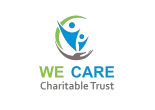Definition
Autism Spectrum Disorder (ASD) is a neurological disorder characterized by difficulties in social interaction, verbal and nonverbal communication, and repetitive behaviors.
Prevalence
1 in 54 children in the United States has ASD (CDC, 2020)
Symptoms
1. Social Communication
- Difficulty initiating/maintaining conversations
- Impaired nonverbal communication (eye contact, facial expressions)
- Trouble understanding tone, sarcasm, and idioms
2. Restricted/Repetitive Behaviors
- Hand flapping, body rocking, or self-injury
- Insistence on routines or rituals
- Strong interests in specific topics
3. Sensory Processing
- Hypersensitivity or hyposensitivity to sounds, sights, smells
Types
- Autistic Disorder (Classic Autism)
- Asperger’s Syndrome
- Pervasive Developmental Disorder (PDD-NOS)
- High-Functioning Autism (HFA)
Causes/Risk Factors
- Genetics
- Brain structure/function differences
- Environmental factors (prenatal exposure to toxins)
- Family history
Diagnosis
- Developmental screening
- Comprehensive diagnostic evaluation (ADOS, M-CHAT)
- Medical evaluation (hearing, vision, neurological)
Treatment/Interventions
- Applied Behavior Analysis (ABA)
- Occupational Therapy (OT)
- Speech Therapy
- Medications (for co-occurring conditions)
- Family support and education
Early Signs
- No babbling or cooing by 6 months
- No gesturing (pointing, waving) by 12 months
- No single words by 16 months
- No two-word phrases by 24 months
- Loss of language or social skills
Our Approach
- Multidisciplinary team (OT, PT, Speech, ABA)
- Individualized treatment plans
- Family-centered care
- Evidence-based interventions
- Ongoing assessment and progress monitoring
By understanding ASD and its effects, We provides comprehensive support to children and families, fostering growth, development, and inclusion.
